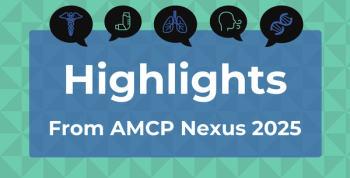
Proteasome Inhibitor-Based Treatment Regimens
Dr Chari discusses the use of proteasome inhibitors [PIs] in the treatment of multiple myeloma and the differences among the available agents.
Transcript
Ajai Chari, MD: The PI [proteasome inhibitor] treatment regimens in general have been very important. We now have actually 7 different classes of drugs approved for myeloma and those include steroids, conventional chemotherapies, IMiDs [immunomodulatory imide drugs], proteasome inhibitors, HDAC inhibitors, monoclonal antibodies, and XP01 inhibitors. A key backbone is the PI, and some of these classes of drugs weren’t approved until the last 4 to 5 years. What is responsible for the improvement in median overall survival in patients with myeloma prior to the last few years has really been the approval of immunomodulatory drugs and proteasome inhibitors.
Luckily, we have 3 major proteasome inhibitors that are already FDA approved. First to come on the market was bortezomib, followed by carfilzomib, followed by ixazomib. Each has its own flavors or features. Bortezomib has been around for a while. It can be given subcutaneously. Initially it was approved on a twice-weekly schedule, but now many combination studies are using it weekly. Carfilzomib does not have the neuropathy that bortezomib is associated with. It must be given intravenously, typically over 30 minutes, particularly for the higher doses. There are many doses and schedules, which can add a little to the complexity, but that’s the second PI. And the third PI is ixazomib, and this is going for the oral convenience that allows it to be given to progression without the fatigue that patients may experience in terms of coming to hospitals for the injections or infusions.
In general, the choice of a particular PI regimen is dependent on patient factors, disease factors, and treatment factors. We covered some of the issues with the treatment factors, but the patient and disease factors are also important. Patient factors could include age and frailty, renal function, cardiac history, neuropathy, insurance status, and the ability to cover oral medications versus injectables. There are a lot of patient factors that would go in to making this decision. Of course, there are disease factors. For example, the International Staging System, the disease burden, along those lines, the number of symptoms in terms of hypocalcemia, renal insufficiency, anemia, bone disease, and also high-risk status—in particular, 17p deletion and translocation (4;14).
I would say just 1 point to that translocation (4;14), when we look at high-risk disease, a lot of regimens that have been approved improve the outcomes of high-risk patients, but none has really overcome it. The closest we’ve come to overcoming high-risk disease, which means that high-risk patients are doing almost as well as standard-risk patients, is with the PIs in translocation (4;14). I think that is a nice niche for these PIs. One consideration is that it’s important in clinical trials that we always treat to progression, but we’ve known from the real-world data that often patients aren’t being treated to progression. So it’s important to think about making the regimens convenient—for example, weekly schedules or oral schedules to allow that treatment to progression.
Regarding the indications and coverages for the PIs, we have bortezomib, which essentially can be used throughout the disease continuum starting with newly diagnosed patients. Carfilzomib has its initial approvals based on the KRd [carfilzomib, lenalidomide, dexamethasone] study, which was KRd versus Rd [lenalidomide, dexamethasone], and that was for 1 to 3 prior lines of therapy. There is also the ARROW study for this similar population, which used weekly carfilzomib, and initially it was approved very early on as a phase II in the advanced setting.
It is, however, also listed in the NCCN [National Comprehensive Cancer Network Guidelines] as a possible option for newly diagnosed patients and might be, as we discussed earlier, preferable for perhaps those young patients who have high-risk disease or have concerns about neuropathy, perhaps a diabetic patient with no cardiac history. Those might be patients to consider for the newly diagnosed. And ixazomib, which is the only oral PI, has its indication based on the TOURMALINE study, which was IRd [ixazomib, lenalidomide, dexamethasone] versus lenalidomide, dexamethasone after 1 to 3 lines of prior therapy. That also showed improvement in PFS [progression free survival]. So that’s a good option for patients who live perhaps a long distance from the infusion centers and need an all-oral regimen. That’s a good option for those patients.
Newsletter
Stay ahead of policy, cost, and value—subscribe to AJMC for expert insights at the intersection of clinical care and health economics.









































